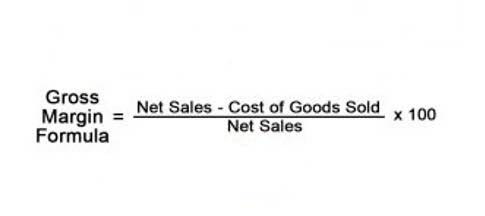
You don’t assume anything for Exploration since you’re pretending that the company finds nothing and dwindles to $0 in the future, and you leave out items like corporate overhead and trial balance SG&A because we’re valuing the company on an asset-level. In each year, you assume that you produce either the production volume of that year or the remaining reserves – whichever number is lower. And then you deduct this production from their reserves… and (hopefully) replace it with sufficient CapEx spending, linking the dollar amount of that spending to a specific amount of reserves. You might assume a modest increase over that number, especially if the company is spending a lot on finding new resources. So let’s say that a company has 12,000 billion cubic feet (12,000 Bcf) of natural gas in its reserves and produces 500 billion cubic feet (500 Bcf) annually.
Contact us for more information on our oil and gas accounting services
One of the unique aspects of PSCs is the concept of “cost recovery.” The contractor is allowed to recoup its exploration and development expenditures from a portion of the produced oil or gas. This mechanism ensures that the contractor can recover its investment before sharing profits with the state. However, there are often limits on the amount of production that can be allocated to cost recovery in any given period, which can impact the contractor’s cash flow and financial planning. Revenue recognition in the oil and gas industry is a nuanced process that hinges on the specific terms of contracts and the nature of the transactions involved. The industry often deals with long-term contracts, which can complicate the timing and measurement of revenue. One of the primary frameworks guiding revenue recognition is the IFRS 15 standard, which outlines a five-step model to determine when and how much revenue should be recognized.

Accounting standards codification update

In addition to these factors, companies must also consider the impact of joint ventures and partnerships on revenue recognition. In the oil and gas industry, it is common for multiple entities to collaborate on exploration, development, and production projects. Each partner’s share of revenue must be accurately calculated and reported, taking into account the specific terms of the joint venture agreement. This often involves detailed tracking of costs, production volumes, and sales proceeds, ensuring that each party receives its fair share of the revenue. In addition to cost allocation, joint venture accounting must address the treatment of joint venture assets and liabilities.
- Certain services may not be available to attest clients under the rules and regulations of public accounting.
- Proved reserves are those with a high degree of certainty to be recoverable under existing economic and operational conditions.
- Then, you’d multiply the production volume times the average price each year for all commodities to get the revenue by year.
- GAAP and a public company auditor’s requirement under PCAOB auditing standards related to going concern.
- Companies may have changes to their processes and internal controls as they adapt to the new conditions necessitated by COVID-19, such as working remote, personnel losses, and other constraints.
Election results set the stage for extension of Trump tax cuts
We serve as your one-stop shop for your back-office accounting needs by providing innovative cloud-based technology platforms that simplify your financial reporting processes. Our collaboration reduces your manual workload and enhances daily efficiencies by implementing real-time reporting, easy-to-use dashboards and automated processes. By tailoring a cloud solution that fits your business needs, business leaders will have the data that can help support critical business decisions and fuel growth. We’re here to meet all your accounting needs, providing clarity and insights to help you make decisions that propel your accounting for oil and gas companies business forward. The process of calculating DD&A involves several steps, starting with the estimation of the total recoverable reserves for depletion purposes. This estimation is crucial as it directly impacts the rate at which costs are allocated over the productive life of the asset.

You add all those up to arrive at Enterprise Value, then back into Equity Value the normal way, and calculate the company’s Implied Share Price by dividing by the diluted shares outstanding. Then, you add up and discount everything based on the standard 10% discount rate used in the Oil & Gas industry (no WACC or Cost of Equity here). You focus on Production and Development expenses here, both of which may be linked to the company’s production in the first place. You always capitalize acquisitions and development (actually constructing the field or well), and you always expense production. Given the high stakes involved, accurate accounting is crucial for compliance, investor confidence, and strategic decision-making. Whether you’re suing or being sued, we can provide witness testimony, damage estimations, and valuation reports that support your case with industry expertise.

Oil and gas accounting, financial reporting, and tax update
Certain services may not be available to attest clients under the rules and regulations of public accounting. When there are conflicts between different accounting principles or methods, a hierarchy exists to guide the selection of the most appropriate principle. Expenses should be recognized in the period in which they are incurred, helping to match costs with the revenue they generate.
- The process involves not only the physical removal of assets but also the restoration of the site to its original condition, which can be both time-consuming and costly.
- You can roll up most niche accounting functions into one of those six primary functions because all industries have capital expenditures, operating costs, G&A, revenue, and production.
- One of the primary considerations in joint venture accounting is the method of accounting to be used.
- For cases where the company is highly diversified – think Exxon Mobil – you need to value its upstream, midstream, downstream, and other segments separately and add up the values at the end.
- On the other hand, the proportionate consolidation method involves recognizing the investor’s share of the joint venture’s assets, liabilities, revenues, and expenses directly in its financial statements.
The two most prevalent methods are the equity method and the proportionate consolidation method. Under the equity method, an investor recognizes its share of the joint venture’s net income or loss in its financial statements, reflecting its investment in the venture. This method is typically used when the investor has significant influence but not control over the joint venture. On the other hand, the proportionate consolidation method involves recognizing the investor’s share of the joint venture’s assets, liabilities, revenues, and expenses directly in its financial statements. Another important aspect is the treatment of variable consideration, which is common in oil and gas contracts.
